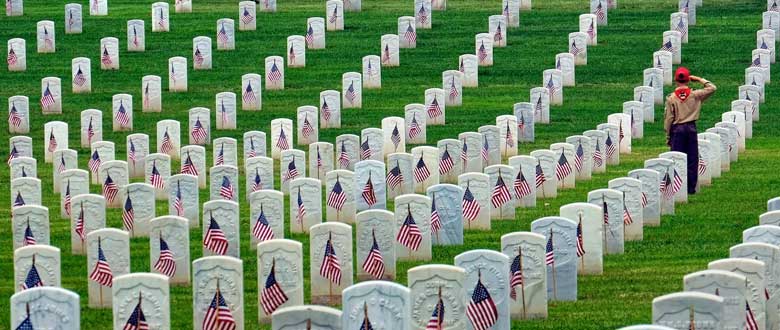Memorial Day is much more than just a three-day weekend to kick off the summer. For many Americans, Memorial Day is a day of reflection, remembrance and memorial.
The tradition of decorating the graves of fallen soldiers began during the Civil War. In the early days, the South and the North recognized their dead on different days. The North and South even called it by different names.
On April 25, 1866, women in the town of Columbus Mississippi decorated the graves of both the Confederate and Union soldiers in a “Memorial Day” observance. People living in the North called their day of remembrance Decoration Day.
The name, Memorial Day did not become the more common name until after World War II, and was not declared the official name by Federal law until 1967.
In 1968, Congress passed the Uniform Monday Holiday Act, which moved four holidays, including Memorial Day, from their traditional dates to a specified Monday in order to create a convenient three-day weekend. This move was not welcomed by many veteran groups. In 2002, the Veterans of Foreign Wars stated;
Changing the date merely to create three-day weekends has undermined the very meaning of the day. No doubt, this has contributed a lot to the general public’s nonchalant observance of Memorial Day.
On Memorial Day, the flag of the United States is quickly raised to the top of the flag pole, and then solemnly lowered to half-staff. It remains there noon. It is then raised to full-staff for the remainder of the day.
This is to recognize all of the men and women who have died in service to our country. At noon, their memory is raised by the living, who resolve not to let their sacrifice be in vain, but to rise up in their stead and continue the fight for liberty and justice for all.
The tradition of poppies on Memorial Day began in 1918, when inspired by the poem, In Flanders Fields, YWCA worker Moina Michael attended a conference wearing a silk poppy. She distributed the few she made to other attendees. The poppy was adopted in 1920 as the National American Legion as their official symbol of remembrance.
“In Flanders Fields” is a war poem written during the First World War by Canadian physician Lieutenant-Colonel John McCrae. He was inspired to write it on May 3, 1915, after presiding over the funeral of friend and fellow soldier who died in the Second Battle of Ypres. According to legend, fellow soldiers retrieved the poem after McCrae, initially dissatisfied with his work, discarded it. “In Flanders Fields” was first published on December 8 of that year in the London-based magazine Punch.
In Flanders fields the poppies blow
Between the crosses, row on row,
That mark our place; and in the sky
The larks, still bravely singing, fly
Scarce heard amid the guns below.
We are the Dead. Short days ago
We lived, felt dawn, saw sunset glow,
Loved and were loved, and now we lie
In Flanders fields.
Take up our quarrel with the foe:
To you from failing hands we throw
The torch; be yours to hold it high.
If ye break faith with us who die
We shall not sleep, though poppies grow
In Flanders fields.
The “National Moment of Remembrance” resolution was passed on Dec 2000 which asks that at 3 p.m. local time, for all Americans “To voluntarily and informally observe in their own way a Moment of remembrance and respect, pausing from whatever they are doing for a moment of silence or listening to ‘Taps.”






